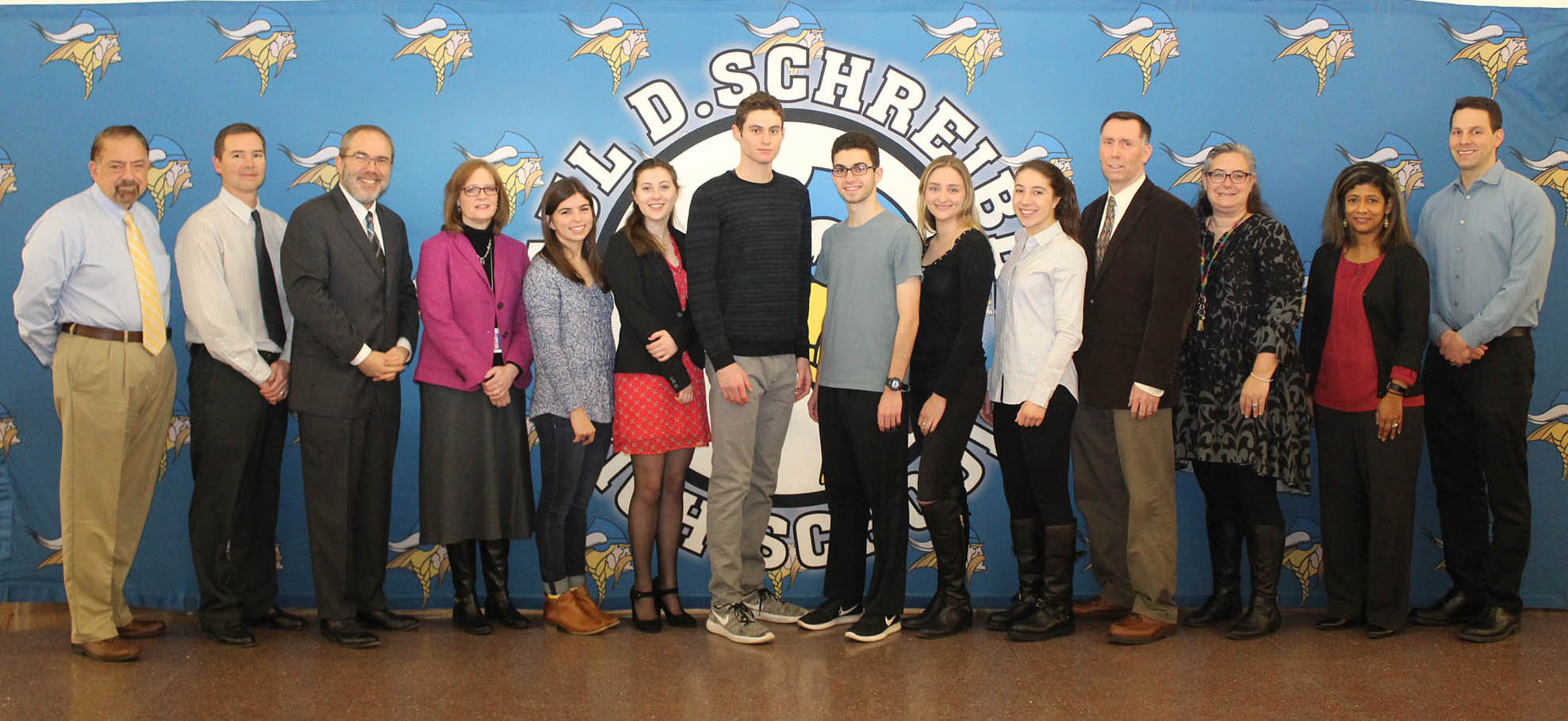Six Paul D. Schreiber seniors last Wednesday were named semifinalists in the annual Regeneron Science Talent Search, a nationwide research competition.
Allison Winter, Lauren Seidman, Michael Nachman, Dylan Langone, Maria Kogan and Samantha D’Alonzo were all recognized as “scholars” in the competition, formerly sponsored by Intel.
The students each received a $2,000 reward for being named semifinalists among 1,749 applicants.
“Year after year, Schreiber’s research students amaze us. With every study they are working toward making our world a better place,” Superintendent of Schools Kathleen Mooney said. “I congratulate them for their dedication and groundbreaking work and commend their teachers and families for their tremendous support.”
D’Alonzo used Twitter data to see if people’s behavior on social media correlated with the percentage of obese people for her project “Statistical Modeling and SIR Modeling in New York State Counties of Syndrome X Based on Text Based Indicators From Social Media and Food Environment.”
D’Alonzo said she used the Twitter content of random people, using an application function that allowed her to stream tweets from everyone in the New York area.
“I was very surprised when I won, because I’m still actively working on the research, but I guess the hard work paid off,” D’Alonzo said.
Kogan worked at a human genetics lab, researching simulated behavior of viruses in human DNA, for her “Constructing a Viral Integration Visualizer: An Application for Analyzing the Patterns of Viral Integrations and Their Impact on Surrounding Genes on the Human Genome.”
Kogan said she wants to continue building upon her research and get it published.
“I was just joking to someone that the award winners were online and a second later got a text from a teacher, and I gasped,” she said. “I was really shocked.”
Looking at the data of astrophysical gravitational waves, Langone’s research project was “A Search for Astrophysical Gravitational Waves Using LIGO S6 Data”
Langone said he spent the month of August conducting the research, and said he thinks there is a lot of work still to be done.
“I was happily surprised, and it was unexpected because my research didn’t find anything,” he said.
Seidman’s project, “Doctor Facilitated Denial: A Barrier to End of Life Planning Among COPD Patients,” used transcripts of audio sessions with severe COPD patients and looked for what may be blocking a patient’s motivation to pursue end-of-life planning.
Seidman said she found doctors often “minimized severity of the patient’s condition,” which may have influenced the patients to put off the planning.
“It was nice to be named a scholar because the project meant a lot to me because I want to pursue medicine,” she said. “I was really happy and excited the school did so well.”
Nachman, who worked with a professor at Stony Brook University and looked at presidential primaries as indicators of a candidate’s general election performance, produced “An Analysis of Presidential Primaries as General Election Predictors.”
Nachman said he correctly predicted the 2016 election by using data that showed how the eighth set of primaries predicted the election winner.
“I became interested in the topic from a young age,” he said. “I was really excited and found out when I was walking out of physics, celebrated for a second and then scrambled to math.”
Allison Winter’s project “Neurogenesis in the Dentate Gyrus” focused on how structures in the brain are connected to memory.
“I’ve always found memory to be really fascinating,” Winter said. “So many people are affected by diseases that affect their memory.”
Winter said she did not expect to be named a scholar and is very happy.
“I’ll probably keep continuing the research and expand on what I did,” Winter said.
Forty finalists to be named Jan. 24 will compete for $1.8 million in awards in Washington, D.C., in March, with winners named at a March 14 gala. The top winner will get $250,000.



